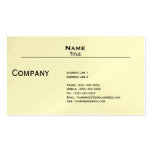How to Train Receptionists

A cordial, efficient receptionist provides a favorable introduction to a business.
A receptionist establishes the tone of a potential customer’s or vendor's interaction with a business. Receptionists typically answer telephone calls, greet incoming visitors and provide verbal and written information about the company. Many receptionists also assist with company mail services and provide other secretarial support. A specialized receptionist, such as a front-desk receptionist at a medical practice or large construction business, performs additional tasks specific to the nature of the business. Carefully supervised receptionist training is key to a positive front-desk experience for customers and vendors.
Step 1: Discuss the receptionist position’s value. Emphasize that a business’s receptionist serves as a valuable business ambassador. A positive receptionist interaction encourages a customer to proceed with his business transaction; a negative experience may spur the customer to turn to another company for his service needs. Discuss the value of a receptionist’s professional appearance, friendly but businesslike manner and willingness to make the customer feel at ease.
Step 2: Provide the receptionist with company literature. Assemble company brochures, product data and other literature that describes the company’s operations. Include information on divisions in other states or countries, if appropriate. Add lists of general company procedures, such as employee etiquette or corporate security protocols. Provide the new receptionist with a well-rounded company snapshot.
Step 3: Discuss general receptionist job tasks. Summarize the required receptionist functions, along with the preparation involved for each task. In a large sales office, for example, a receptionist should confirm each sales representative’s daily travel plans before beginning her daily telephone duties. A medical office receptionist may confirm each day’s appointments after listening to cancellation voice mails left while the office was closed. Prepare a written reference sheet that clearly summarizes the major job tasks and components.
Step 4: Review each job task with the receptionist. Prepare written instructions for each specific task. Role-play customer interactions to demonstrate the proper way to accomplish the task. For example, simulate a telephone call in which you direct the receptionist to answer the phone and handle a customer problem. Discuss the importance of active listening, or empathizing with a customer’s concern, and cooperatively exploring a solution. Repeat this approach with each receptionist job task.
Step 5: Reinforce or correct the receptionist’s behaviors. Provide positive feedback when the new receptionist accomplishes a task correctly, or increases her efficiency when completing a project. Conversely, diplomatically address areas where the receptionist can improve her performance. Emphasize that the recommended changes will make her a more valuable employee. Treat your colleague with respect and professionalism while you address these issues.
Step 6: Present receptionist job growth opportunities. Illustrate job growth potential within the receptionist position. For example, if the position requires familiarity with multiple computer programs, the receptionist may add database administration responsibilities. Company management may tap a bilingual receptionist to be the preferred translator for transactions with customers who speak that language. Discuss realistic job growth potential, along with additional compensation, if appropriate. Address potential movement into other company positions where applicable.






No comments:
Post a Comment